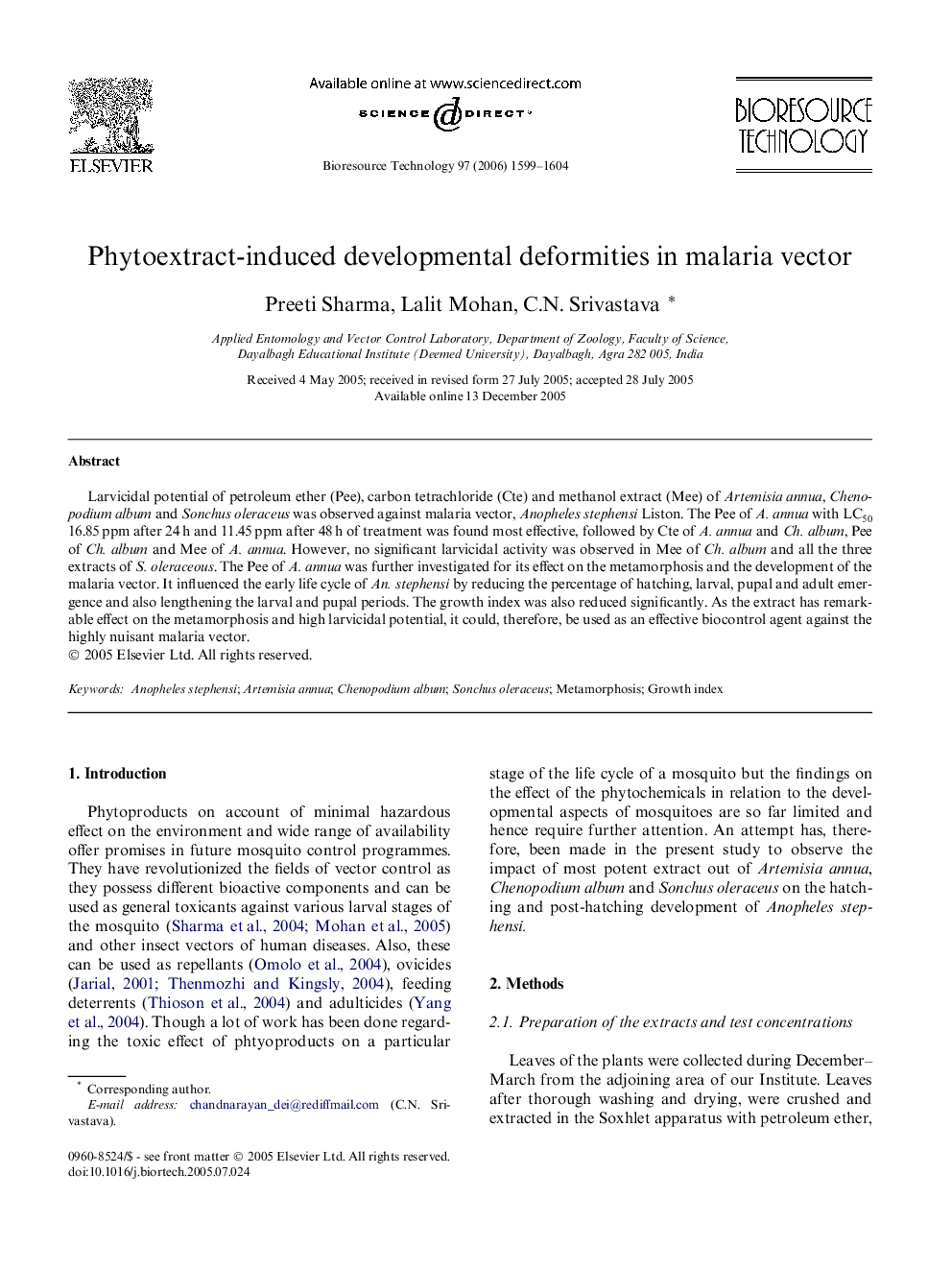| Article ID | Journal | Published Year | Pages | File Type |
|---|---|---|---|---|
| 686688 | Bioresource Technology | 2006 | 6 Pages |
Larvicidal potential of petroleum ether (Pee), carbon tetrachloride (Cte) and methanol extract (Mee) of Artemisia annua, Chenopodium album and Sonchus oleraceus was observed against malaria vector, Anopheles stephensi Liston. The Pee of A. annua with LC50 16.85 ppm after 24 h and 11.45 ppm after 48 h of treatment was found most effective, followed by Cte of A. annua and Ch. album, Pee of Ch. album and Mee of A. annua. However, no significant larvicidal activity was observed in Mee of Ch. album and all the three extracts of S. oleraceous. The Pee of A. annua was further investigated for its effect on the metamorphosis and the development of the malaria vector. It influenced the early life cycle of An. stephensi by reducing the percentage of hatching, larval, pupal and adult emergence and also lengthening the larval and pupal periods. The growth index was also reduced significantly. As the extract has remarkable effect on the metamorphosis and high larvicidal potential, it could, therefore, be used as an effective biocontrol agent against the highly nuisant malaria vector.
